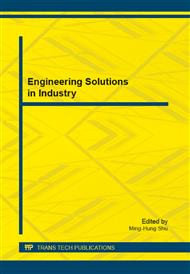p.3
p.7
p.11
p.15
p.19
p.23
p.29
p.33
Analysis of Pressure Wave Model Predictions Considering Diesel Fuel Properties
Abstract:
Diesel fuel pressure wave inside Combination Electronic Unit Pump (CEUP) pipeline has been investigated using a 1D viscous damped mathematical model considering the effect of four key fuel properties including density, viscosity, acoustic wave speed and bulk modulus. Wave equation (WE) based mathematical model has been developed in MATLAB using finite difference method. Mathematical model results at various operating conditions of diesel engine have been verified by comparing with those of AMESim numerical model of CEUP and quantified through Root Mean Square Errors (RMSE) and Index of Agreements (IA). Dynamic variations of these fuel properties during fuel injection cycles have also been incorporated in mathematical model by utilizing empirical formulas. Predicted results show that simulated results which consider fuel properties dynamic variations as a function of pressure are more coherent to AMESim numerical model results.
Info:
Periodical:
Pages:
7-10
Citation:
Online since:
October 2014
Authors:
Price:
Сopyright:
© 2014 Trans Tech Publications Ltd. All Rights Reserved
Share:
Citation:


